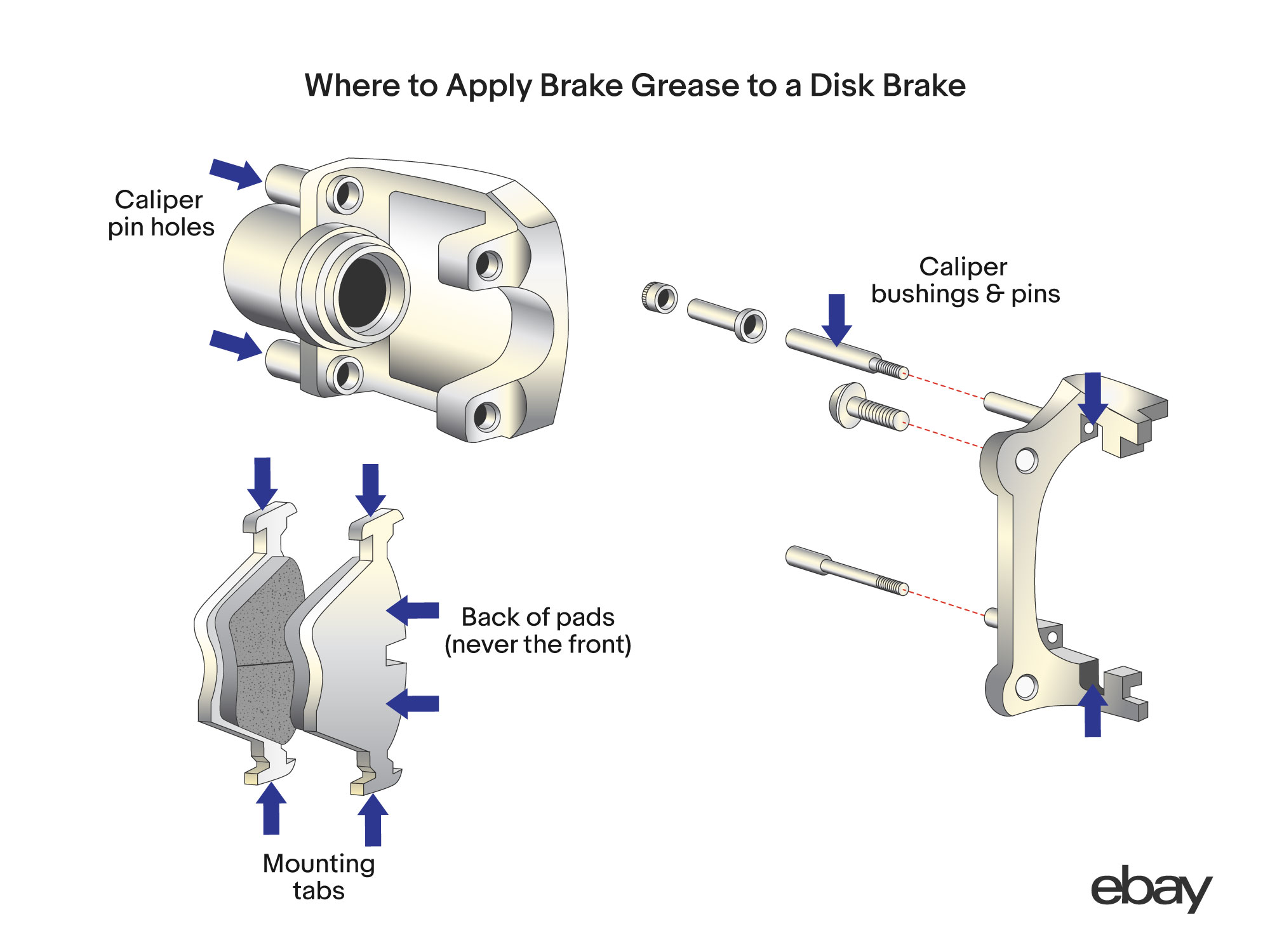You rely on your vehicle to get you where you need to go safely. To ensure your car performs at its best, maintaining the brake system is crucial.
Part of this maintenance includes applying grease to your brake pads. You might wonder, why grease? Well, it’s not just about keeping parts moving smoothly; it’s about prolonging the life of your brakes and ensuring a quieter, safer ride. Imagine driving down the road, confident that your brakes will respond instantly and silently whenever you need them.
Applying grease properly is your key to achieving this peace of mind. You’ll learn exactly how to apply grease to your brake pads, ensuring every drive is smooth and safe. Let’s dive in and discover where to apply brake pad grease for optimal performance. Your car—and your nerves—will thank you!

Credit: www.ebay.com
Where To Apply Brake Pad Grease
Apply brake pad grease to the back of the brake pads. This helps reduce squeaking noises. Also, apply a small amount on the metal contact points where the pads meet the caliper. Avoid greasing the friction side of the pads.
Maintaining your car’s braking system is crucial for safe driving. Applying grease to brake pads can reduce noise and prolong their lifespan. Knowing where to apply this grease ensures effective braking and smooth operation. Caliper Pins and Slides For caliper pins and slides, it’s essential to apply grease properly.
These parts allow the caliper to move smoothly: – Caliper pins: These metal rods guide the caliper’s movement. Greasing them ensures smooth sliding. – Caliper slides: These channels hold the pins. Apply grease to prevent binding and wear. Brake Pad Contact Points Brake pad contact points require attention for optimal performance.
These areas often cause noise if neglected: – Back of the brake pad: Apply grease here to dampen vibrations and noise. – Pad edges: Grease these to ensure smooth movement within the caliper. Anti-Rattle Clips Anti-rattle clips help keep brake pads in place.
Grease these clips to reduce vibration: – Clip surfaces: Apply grease on contact surfaces. This minimizes rattling and ensures stability. – Clip edges: Greasing edges allows better fitment within the caliper. Wheel Hub Surface The wheel hub surface is crucial for even brake wear.
Greasing this area ensures proper pad alignment: – Hub face: A thin layer of grease prevents rust and corrosion. – Mounting surface: Grease here ensures the rotor sits flush, avoiding uneven wear. Brake Pad Shims Brake pad shims act as buffers.
Grease them for quieter braking: – Shim faces: Apply grease to both sides. This reduces noise and vibration. – Edges of shims: Greasing edges ensures proper seating against the pad and caliper. Applying grease to these specific areas helps maintain your brakes effectively.
Proper application ensures quieter operation and extends component life.

Credit: www.youtube.com
Conclusion
Applying grease to brake pads ensures smooth and quiet braking. Always choose the right type of grease for this task. Focus on applying it to the back of the brake pads. Avoid getting grease on the front surface. This can reduce braking effectiveness.
Clean the area thoroughly before applying grease. Regular maintenance can prevent brake noise and prolong pad life. A little effort goes a long way in maintaining your vehicle’s safety. Keep your car in top shape. Enjoy smooth rides every time you drive.
Safety and performance go hand in hand.
